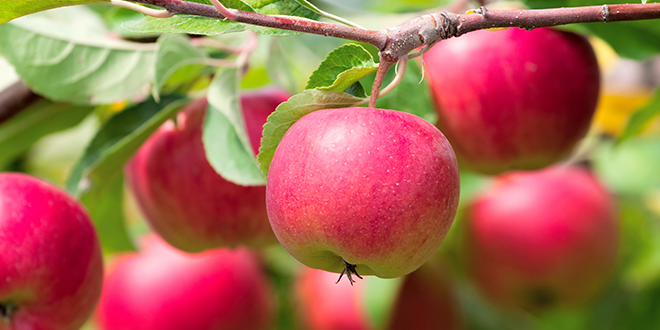Jun 2, 2016Freezes damage tree fruit in Lake Ontario region
Two record-setting freezes have served up a double whammy for New York’s tree fruit crop. As a result, you won’t find many local apricots or peaches this summer. James Eve, owner of Eve Farm Service in Naples, NY, estimates that only 10 percent of the peach crop in the Lake Ontario fruit growing region has survived, and that plums aren’t much better.
“It’s gonna be a severe economic situation for a number of growers,” says Eve.
So what happened? Around Valentine’s Day, temperatures dropped to -15˚F, even -18˚F in some areas. Gregory Peck, assistant professor of Horticulture at Cornell, says that peaches are damaged at -10˚F, so it’s likely that February’s freeze killed many of the buds.
Then warm March temperatures coaxed fruit trees out of dormancy. According to Peck, bud development was ahead of schedule by several weeks. As the buds took up water, expanded, and pushed their protective scales away, they were more susceptible to injury. On April 5, when thermometers in Central New York were reading in the single digits and teens, those sensitive plant parts were essentially nipped in the bud.
“First hit were the apricots,” says Mario Miranda Sazo, area fruit specialist for Cornell Cooperative Extension. “They’re in very bad shape.” Miranda Sazo has also seen severely damaged peach trees in Western New York that didn’t even bloom.
Steve Cummins of Indian Creek Farm in Ithaca says, “Peaches were kind of a wipeout. To my knowledge, there’s no stone fruit in the county.” The blooms on his plums and apricots were so damaged that they aborted. Ian Merwin of Black Diamond Farm in Trumansburg says he lost his peaches and Asian plums.
But not all fruit develops at the same time, and some varieties are more cold hardy than others. Thus, the prospects are brighter for tart and sweet cherries, certain plums, pears, and apples. According to Peck, dormant apples can withstand temperatures to -25˚F, so the February freeze didn’t damage them. Yet, many were affected by the April freeze, so growers won’t know the full extent of the damage until early June, when fruitlets gain size. But there’s cause for optimism.
One factor working in favor of a fruit crop is nature’s redundancy. Apple trees, for example, produce 90-95 percent more flowers than the tree needs for a full crop. “You can afford to lose 80-90 percent from cold damage,” says Merwin. “You don’t want them all to become fruit or the tree will be grossly over-cropped.”
The siting of an orchard also helps determine a successful crop. Trees planted partway up slopes, above where the cold air sinks, are generally more protected from cold-temperature damage than low-lying plantings. Orchards near large bodies of water, such as Lake Ontario and Cayuga Lake, stay cooler than inland sites into the spring. Because they develop more slowly, they’re often still dormant during surprise freezes, such as the one on April 5.
Growers, consultants, and Extension specialists are waiting to see how all of these factors contribute to the fruit outlook. “It’s a lot better than we thought a few weeks ago,” says Miranda Sazo. And Eve seems to sum it up: “Nature’s in charge of this; we’re just standing by observing.”
Source: Hot Potato Press















